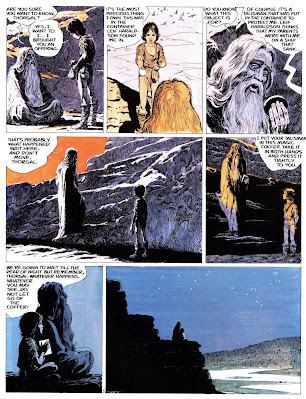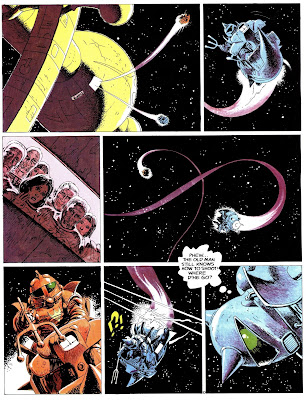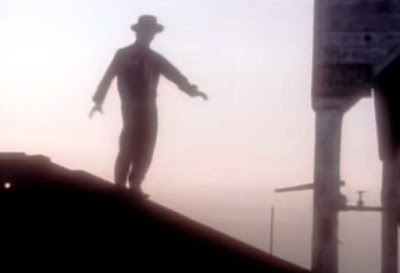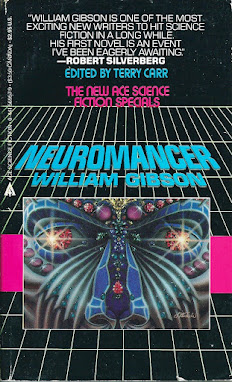Book Review: 'The Year's Best Horror Stories: XX' edited by Karl Edward Wagner
2 / 5 Stars
'The Year's Best Horror Stories: XX' (349 pp.) was issued by DAW Books in October 1992. The cover art is by Jim Warren.
Well, here we go with another of the DAW 'Year's Best' anthologies, copies of which have long been out of print and fetch steep asking prices from used book retailers. Is it worth shelling out $20 (or more !) for volume XX ?
Ermmm........nah.
All of the stories in this anthology saw print in various magazines, digests, and other anthologies during the intervals from 1989 - 1991. I noticed that almost all of the entries in this particular volume are short, i.e., fewer than 10 pages in length, which made getting through its 349 pp. a little easier.
[It's impossible not to evaluate Wagner's performance in assembling stories for this anthology without noting that at this point in his life he was an alcoholic and suffered from myriad health problems (he died in 1994 at age 48).]
Wagner opens the book with an Introduction, titled 'Garage Band Fiction', in which he complains that selecting the stories in this volume was made very difficult by the need to wade through piles of artless Serial Killer tales.
(As pointed out by Grady Hendrix and Will Errickson in Paperbacks from Hell, the publication of Thomas Harris's novel The Silence of the Lambs in 1988 triggered an early 90's boom in paperbacks dealing with serial killers, a development that curtailed the appearance of new horror fiction).
Why are these people writing the same bad stories over and over ? wails Wagner. Ahhh, the indignities one must endure in the course of selecting The Year's Best.........
Anyways, my capsule summaries of the contents:
Ma Qui, by Alan Brennert: in combat in Vietnam, a U.S. soldier discovers the ghostly world that underpins 'reality'. Competently written, and imaginative.
The Same in Any Language, by Ramsey Campbell: by the late 1980s Campbell belatedly realized that his magniloquent prose style had long since turned into unintentional self-parody, and he began to adopt a more coherent approach to his wordsmithing. This story is gratifyingly simple and direct in its recounting of a visit by an English boy, his father, and Dad's new girlfriend, to a Greek Isle. The story seems to be as much about the British as awful tourists, as anything else......
Call Home, by Dennis Etchison: the obligatory Etchison entry. Surprisingly, this one isn't that bad. It's about a man who aids a person in crisis. But sometimes being the good guy has its drawbacks......
Root Cellar, by Nancy Kilpatrick: a man returns to the home where he grew up, under trying circumstances. The ending is too vague to be effective.
An Eye for An Eye, by Michael A. Arnzen: this story first appeared in Outlaw Biker's Tattoo Revue (?!). It's a well-told tale of a vagrant who pesters a tattoo shop owner for an unusual piece of 'skin art'.
The Picnickers, by Brian Lumley: strange things are happening in the graveyard of a Welsh coal-mining village. This is one of the best stories in the anthology; it takes its time getting underway, but has an imaginative premise and delivers a creepy ending.
With the Wound Still Wet, by Wayne Allen Sallee: a short-short tale about witnesses to a traffic accident. It's more coherent than Sallee's usual entries in the 'Year's Best' anthologies.
My Giddy Aunt, by D. F. Lewis: in his Introduction to this story, editor Wagner informs us that author Lewis has published over 300 short stories in the 'small press' over the interval from 1987 - 1991, an average of about 60 stories per year. I was alarmed by this statistic. Still, 'Giddy Aunt' has a quirky sense of black humor to it. I did notice one sentence read:
Bill stirred the stew, discovering tiny succubic faces staring up at him from the configurations of the mince.
Baseball Memories, by Edo van Belkom: Sam Goldman likes to make bets with strangers about baseball statistical minutiae, a field in which Sam excels. But there's always someone, somewhere, who knows more than you think you do........
This story, which first appeared in 'Aethlon', a journal of sports literature published by East Tennessee State University, has no horror content. Its inclusion likely was a reflection of Wagner's desire to showcase his masterful awareness of the presence of 'weird' fiction in non-genre outlets.
The Bacchae, by Elizabeth Hand: in a decaying near-future America, women have gained mysterious, and deadly, powers. Surrealistic imagery and sharp episodes of violence make this one of the better stories in the anthology.
Common Land, by Joel Lane: Rosalind goes to live in a depressing Birmingham suburb where her boyfriend Steven shares a squat with people suffering from an unusual ailment........
This is an early 'weird fiction' tale and shares the affectations of that sub-genre: the plot is cursory, with the narrative emphasizing the relentless use of figurative language, and empty sentences, to impart an atmosphere of Strangeness. It is stylistically inspired by the stories Ramsey Campbell wrote in the 70s and 80s. The ending has a perfunctory quality.
An Invasion of Angels, by Nina Kiriki Hoffman: in a particularly warped version of Purgatory, people do unpleasant things to hapless messengers from Heaven. There is a Clive Barker-ish vibe to this story that makes it one of the best in the anthology.
The Sharps and Flats Guarantee, by C. S. Fuqua: yet another story of old black bluesmen and the supernatural.
Medusa's Child, by Kim Antieau: a young artist living in New York City takes in a Bag Lady, who turns out to be someone unique. The horror content is mild.
Wall of Masks, by t. Winter-Damon: a pervert obtains a mask steeped in Evil. This story is so overwritten, and so plodding, it was a chore to finish.
Moving Out, by Nicolas Royle: the first-person narrator likes to scare his girlfriend. This story tries too hard to be clever, and I suspect most readers will see the denouement coming well in advance.
Better Ways in a Wet Alley, by Barb Hendee: two teenage prostitutes struggle to survive on the Mean Streets of the Uncaring City. The denouement is so cryptic that I couldn't tell if this was a horror story, or simply an examination of existential despair. Probably the latter.
Close to the Earth, by Gregory Nicoll: Tacker, driving late on a cold Winter night, decides to stop at the diner in the hamlet of Maryswood, Virginia. It's never a good sign when the waitress seems more than a little.........odd. One of the better stories in the anthology.
Churches of Desire, by Philip Nutman: Meredith, a dissipated Englishman, wanders the night-time streets of Rome in search of louche pleasures; the reader is made to understand - in laborious fashion - that the seedy vistas Meredith encounters are external manifestations of his own moral and psychological rot. After some inconclusive lumbering about, the narrative devolves into gay porn (?!).
This is the worst story in the anthology. Surely, even one of the Serial Killer stories editor Wagner had to wade through to assemble this collection could have possessed greater merit ?
The anthology includes two stories molded around the classical English ghost story. 'The Lodestone', by Sheila Hodgson, features M. R. James as a character and introduced me to the gerund 'invigilating' (to supervise test-taking). 'Carven of Onyx', by Ron Weighell, attempts to give an edgy sensibility to its recounting of the travails of a convent whose nuns have come into possession of an evil artifact.
The verdict ? There are too few good stories to justify picking up a copy of 'The Year's Best Horror Stories: XX' for the high prices being asked by those few sellers offering the book. Unless you are adamant about collecting every volume of 'The Year's Best', you can pass on this entry.











































































